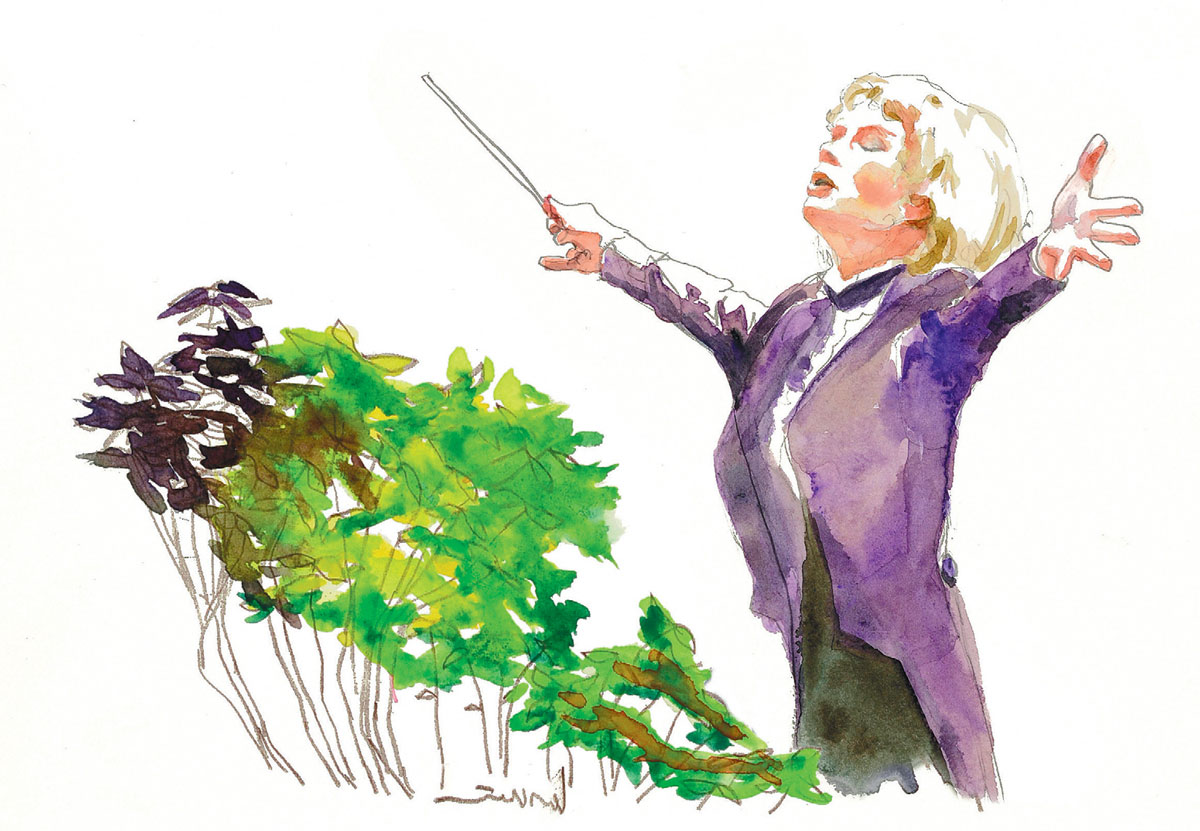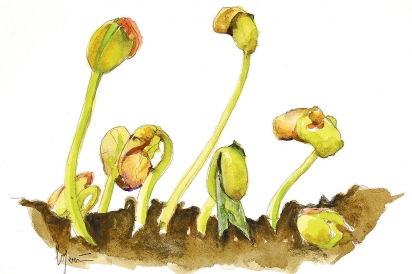The Symphony of the Seed
An orchestral exploration of growth
At first, the process is intimate. You’re alone in your greenhouse, bundled up against the cold, seeding alliums. Outside the window, the world is still sleeping. A brave bird gives a forlorn call, oddly exposed on a naked branch perched over the patchy snow. You scatter a small scoop of hard, lumpy seeds across the top of each pot and cover them lightly. The whole thing just seems so implausible, as you stack flat after flat of brown soil on the shelves.
“There’s no way this can work again,” you think.
Still, you water and wait. A week goes by, sometimes more, and you’ve almost forgotten there was anything in those pots. But then, a single blade, bent against itself, pushes through the soil like a lone oboe squeaking out clearly in a quiet theater while the entire orchestra waits in captivated silence. As the days pass, it creeps taller, millimeter by millimeter, finally breaking free and heaving the shell of its seed out of the ground, hoisting it overhead like a trophy. Others follow—first timidly, then boldly—by the thousands. Flat after flat, they sprout and grow—brassicas, lettuces, tomatoes, peppers. They fill the shelves and saturate our dull winter eyes with their vibrancy.
Of course, the real magic happened underground before that first blade showed itself to the world. As the water soaked the soil around the waiting seed, it began to soften the seed’s protective shell. The parched seed, which was dormant and thirsty for so long, started to drink in water through its hilum bellybutton. As the water quenched the seed, its radicle root started to grow, and soon busted through the seed coat, springing the plant to life once again. That radicle plunged deep into the soil, anchoring it as it began to slurp up nutrients. The plumule shot steadily upward until it surged through to meet the light, unfurling its cotyledon leaves to bask in the sun and be nourished. And thus, the seed was born a plant.
Seeds have a way of knowing when the time is right. It’s a matter of life and death—whether the world is ready to support the seed once it sprouts—so each seed carries built-in intelligence to know when it’s time. Some seeds in the desert will lie dormant for months, years or even decades, waiting for the perfect conditions to make a go at their one chance at life. Garden seeds, having co-evolved with their doting human caretakers, are more trusting. As long as we place them at the right depth and provide them the right temperature and moisture, they’ll sprout, throwing their survival into our hands.
“I trust you,” they say with each spreading cotyledon. And so we engage in the centuries-old dance between faith and doubt that is agriculture, partnering across vast kingdoms of life to nourish another species.
It’s happening outside now, too. Spring is the whole world waking up; sprouting seeds dot every available surface, from the furrows in the fields to the cracks in the sidewalk.
It’s such a blindly optimistic thing to do—putting hard little lumps of seed into rows of bare brown ground. Yet they come up, by the hundreds and then the thousands, almost invisible at first. Then one day, your whole garden wears a blanket of soft green. The symphony is in raucous crescendo, all the horns and toms and violins have joined in and are climbing toward the joyful tom-toms climax of summer.
Charles Darwin once counted 527 individual seeds in a single teaspoon of pond soil, each with the potential to create millions of more seeds over generations. Though each seed is precarious by itself, as a whole the symphony is unstoppable—seeds cracking open and leaves climbing insatiably out as they eat the sun. It’s one of the grandest feats on earth, and one of the most miraculous for the gardener to behold—the humble seed splitting apart and bursting forward to meet the light. As author Cynthia Occelli describes, “For a seed to achieve its greatest expression, it must come completely undone. The shell cracks, its insides come out and everything changes. To someone who doesn’t understand growth, it would look like complete destruction.”
And yet all around us countless spring seeds are coming undone, bringing the promise of another bountiful season.






